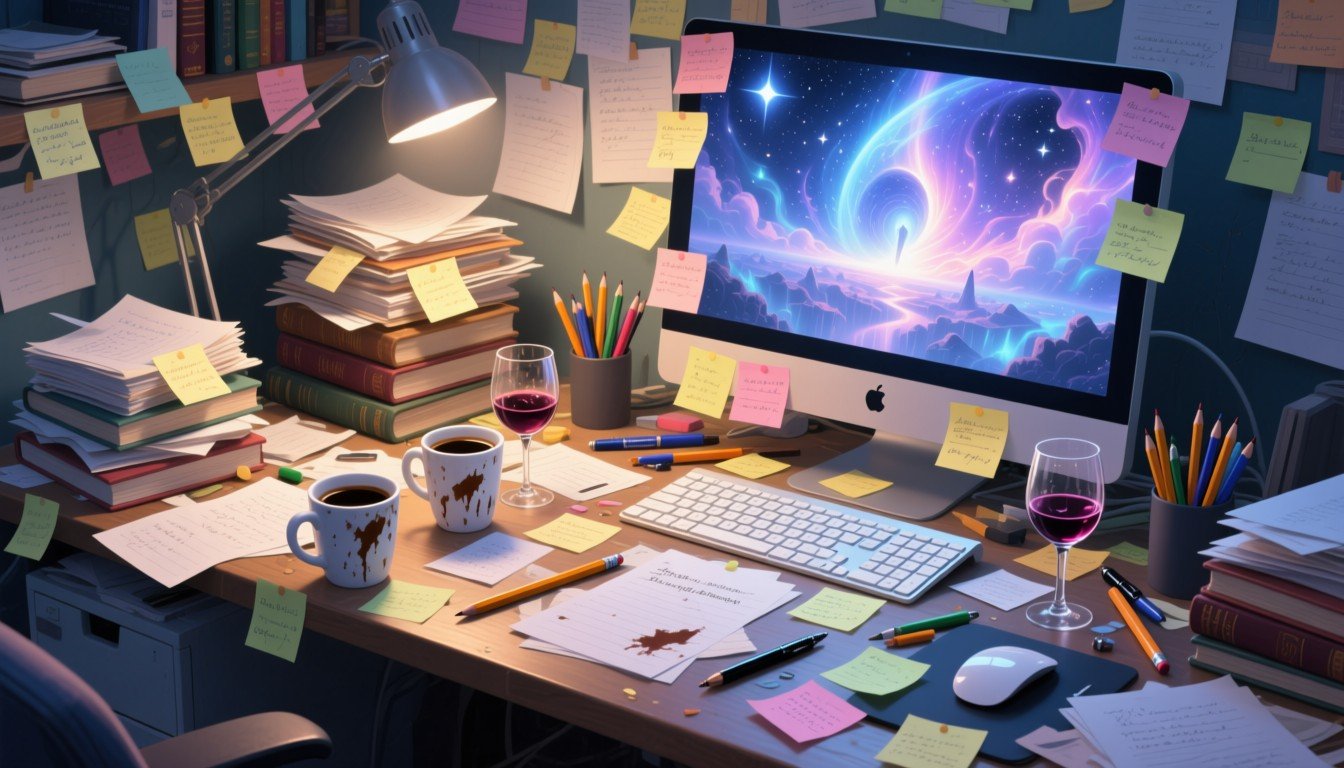Your AI Workspace is a Mess

“If a cluttered desk is a sign of a cluttered mind, of what, then,
is an empty desk a sign?” - Albert Einstein (apparently).
The Problem: Treating ChatGPT Like a Search Bar
Let’s be honest, your ChatGPT probably looks like the workspace above. Half-written prompts. Random experiments. A recipe beside a marketing plan beside a philosophical rant. You scroll, squint, and wonder, “Where did that thing I wrote last week go?”
It’s because ChatGPT is deceptively easy to use. You open a new chat, type a thought, and move on. Before long, you’ve built a wall of noise, dozens (or hundreds) of disconnected threads, each with a tiny piece of your thinking scattered all over.
The problem isn’t your creativity. It’s your AI hygiene. When everything is scattered, context is lost. You start repeating yourself. Your outputs become shallower because the model doesn’t know what’s relevant anymore. Just like a cluttered desk stifles work, a cluttered ChatGPT stifles clarity.
How ChatGPT Actually Thinks
Here’s the first truth about AI workspace management: ChatGPT doesn’t think like you. It remembers just enough to sound intelligent but forgets everything once the window closes, unless it’s part of a structured project.
You can imagine it like this:
- Session memory: What ChatGPT remembers while the chat is open.
- Project memory: What stays within a defined workspace (like "My Bestselling Novel").
- Global memory: Information you’ve explicitly told it to remember about you (your goals, tone, or audience).
Each of these is like a “room” in your digital house. When you close a door (end a chat session), ChatGPT tidies up and forgets what’s inside, unless you’ve filed it properly under a project.
When you treat each prompt as disposable, you lose continuity, and continuity is where intelligence compounds.
Build Your AI Workspace Like a Pro
To use AI seriously, you need to build it like a workspace, not a playground.
Start by introducing a naming convention, a lightweight version control system that helps you (and your AI) stay organised: For example, if like me, you're writing articles for newsletters and clients, you can adopt something like:
- A- (Active article or work in progress)
- R- (Research thread)
- M- (Marketing or SEO packaging)
- F- (Final draft or finished output)
- REF- (Permanent reference file)
Try to keep just 3–5 active chats at any time, and archive or delete older sessions once packaged as DOCX or PDF.
Finally, create a Master Index, like a simple Google Sheet or Excel table, to track your ongoing work. Include title, category, chat name, file name, date updated, and notes. This becomes your AI’s ‘table of contents.’
AI Hygiene Habits for Everyday Users
Weekly Cleanup: Archive finished chats. Rename anything you intend to keep. Delete half-formed experiments. I tend to accumulate a lot of random chats when I need to ask about something, and these sometimes stay on my workspace forever.
Project Separation: Don’t mix personal and professional prompts. Keep them in separate projects. I find these practices extremely useful in organising my chats. Most LLMs now have a feature that allows for persistent context, where you upload relevant files and instructions (like your style guide and workflow) to a specific project folder.
Recall Context Fast: When starting a new chat, type: “Use REF-MasterWorkflow and REF-AIforNonTechNiche as reference.”
Versioning Discipline: Revise document versions incrementally (e.g., MasterWorkflow_v2.docx) when you upload them to the respective project folder.
Practical Prompts
Of course, ask ChatGPT or your favourite LLM to do some of this organising for you:
1. Show me how to organise my ChatGPT workspace like a professional.
2. Create a naming convention system for my current AI projects.
3. Help me build a master index table to track all my ChatGPT work.
4. Generate a weekly cleanup checklist for my ChatGPT projects.
5. Remind me how ChatGPT project memory differs from global memory.
Why This Matters
Order isn’t just about neatness. It’s about thinking clearly.
When your AI environment is structured, you spend less time retyping old prompts, build deeper work, and develop a repeatable thought architecture, which is the real skill behind effective prompting.
Organisation amplifies intelligence. A well-managed workspace turns ChatGPT from a novelty into a creative partner.
FAQ
Q: Does ChatGPT remember my chats automatically?
A: No. Each chat is isolated unless part of a project.
Q: What’s the difference between clearing and deleting chats?
A: Clearing removes context; deleting removes the entire conversation.
Q: Will ad hoc chats affect my project work?
A: Not at all. Each project has its own memory layer.
Q: How often should I reset my workspace?
A: Once every 2–3 weeks, or after completing 3–5 articles.
If your AI workspace feels like chaos, pause and rebuild. Clean up your digital desk. Label your chats. Build your index. Treat ChatGPT like your creative studio, not your junk drawer.
Subscribe to The Intelligent Playbook to learn how professionals use AI to think better, write faster, and stay organised; one clean workspace at a time.
And remember to make your bed.
Thank you for subscribing!
Have a great day!